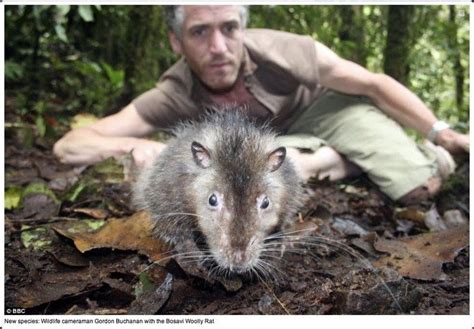
A confidential informant was murdered in broad daylight in South Los Angeles while actively speaking with an FBI agent, marking a brazen act allegedly committed by MS-13 gang members. The informant, whose identity has not been publicly released, was providing information to the FBI as part of an ongoing investigation when the fatal attack occurred. The incident underscores the escalating violence and pervasive influence of MS-13 in the region and raises serious concerns about the safety of informants working with law enforcement.
The Los Angeles Police Department (LAPD) is leading the investigation into the homicide, with the FBI providing support and resources. According to law enforcement sources, the informant was targeted specifically due to his cooperation with federal authorities. The timing of the attack, occurring during a phone call with an FBI agent, suggests a high level of coordination and surveillance on the part of the perpetrators. The incident has prompted immediate action from law enforcement to identify and apprehend those responsible and to assess the broader implications for informant security and ongoing investigations.
The murder has sent shockwaves through the law enforcement community and has raised serious questions about the safety and protection afforded to individuals who risk their lives to provide crucial information. Concerns are mounting over the potential chilling effect this incident could have on other potential informants, who may now be hesitant to cooperate with authorities for fear of similar reprisal. Law enforcement officials are emphasizing their commitment to ensuring the safety of informants and are reviewing protocols and security measures to prevent future incidents.
Background on the Incident
The deadly attack occurred in a residential area of South Los Angeles, a region known for its high levels of gang activity and violent crime. The informant was reportedly standing on the street when he was approached by multiple individuals believed to be MS-13 gang members. Witnesses reported hearing gunshots and observing the suspects fleeing the scene in a vehicle. Emergency responders arrived quickly, but the informant was pronounced dead at the scene.
The FBI agent on the phone with the informant at the time of the attack was able to provide immediate details to responding officers, including a description of the suspects and the vehicle they used to escape. This information has been crucial in the initial stages of the investigation, allowing law enforcement to quickly mobilize resources and begin tracking down potential leads.
“This was a calculated and brazen act of violence,” said an LAPD spokesperson during a press conference. “We are committed to bringing the perpetrators to justice and ensuring that those who cooperate with law enforcement can do so without fear of retribution.”
The identity of the informant has been withheld to protect his family and to avoid jeopardizing any ongoing investigations. Law enforcement officials have described the informant as a valuable asset, providing crucial information that has led to numerous arrests and the disruption of MS-13 operations in the area.
MS-13’s Presence in Los Angeles
MS-13, also known as Mara Salvatrucha, is a transnational criminal gang that originated in Los Angeles in the 1980s. The gang has a significant presence in the United States, particularly in Southern California, as well as in Central America and other parts of the world. MS-13 is known for its extreme violence, including murder, extortion, drug trafficking, and human smuggling.
In Los Angeles, MS-13 has been linked to numerous high-profile crimes and has been a primary target of law enforcement efforts to combat gang violence. The gang’s operations are often characterized by a strict code of silence and a willingness to use violence to maintain control and intimidate rivals and potential informants.
“MS-13 is a ruthless and dangerous gang that poses a significant threat to our communities,” said a federal prosecutor familiar with the gang’s activities. “We will continue to work with our law enforcement partners to dismantle their operations and bring their members to justice.”
The gang’s presence in South Los Angeles has contributed to a climate of fear and instability, making it difficult for residents to feel safe and secure. Law enforcement agencies have implemented various strategies to address the problem, including increased patrols, targeted investigations, and community outreach programs.
Impact on Law Enforcement and Informant Safety
The murder of the confidential informant has raised serious concerns about the safety and protection afforded to individuals who cooperate with law enforcement. Informants play a critical role in providing information about criminal activities, often at great personal risk. Their cooperation is essential for building cases, making arrests, and disrupting criminal organizations.
“Informants are the lifeblood of many investigations,” said a retired FBI agent who has worked extensively on gang-related cases. “Without their cooperation, it would be much more difficult to gather the intelligence needed to effectively combat criminal activity.”
The incident has prompted law enforcement agencies to review their protocols and security measures for protecting informants. This includes assessing the level of risk involved in each case, providing adequate security and support, and ensuring that informants are aware of the potential dangers and their rights.
“We take the safety of our informants very seriously,” said an FBI spokesperson. “We are constantly evaluating our procedures and working to improve our ability to protect those who cooperate with us.”
Some experts have suggested that law enforcement agencies should consider providing informants with witness protection services, including relocation and financial assistance, to help them avoid retaliation from criminal organizations. Others have called for increased penalties for those who target or harm informants.
The Investigation and Potential Leads
The LAPD and FBI are working closely together to investigate the murder and identify those responsible. Law enforcement officials have said that they are pursuing several leads, including surveillance footage, witness statements, and information gathered from other informants.
“We are committed to conducting a thorough and comprehensive investigation,” said an LAPD detective involved in the case. “We will leave no stone unturned in our efforts to bring the perpetrators to justice.”
Law enforcement officials have also emphasized the importance of community cooperation in solving the case. They are urging anyone with information about the murder to come forward and share what they know.
“We need the community’s help to solve this crime,” said an LAPD spokesperson. “Anyone with information, no matter how small, could be crucial to our investigation.”
The investigation is expected to be complex and challenging, given the gang’s history of violence and intimidation. However, law enforcement officials are confident that they will be able to identify and apprehend those responsible for the murder.
Community Reaction and Concerns
The murder has sparked outrage and concern among residents of South Los Angeles. Many community members are expressing fear and frustration about the ongoing gang violence and the lack of safety in their neighborhoods.
“We are tired of living in fear,” said a local community activist. “We need more resources and support to address the root causes of gang violence and to create safer communities for our children.”
Some residents have called for increased police presence and tougher penalties for gang members. Others have emphasized the importance of addressing the underlying social and economic factors that contribute to gang involvement, such as poverty, lack of education, and limited opportunities.
“We need to invest in our communities and provide young people with alternatives to gang life,” said a local pastor. “We need to create opportunities for them to succeed and to build a better future for themselves.”
Community leaders are working to organize meetings and forums to discuss the issue of gang violence and to develop strategies for addressing the problem. They are also calling on elected officials and law enforcement agencies to work more closely with community organizations to find solutions.
Legal and Ethical Considerations
The use of confidential informants raises a number of legal and ethical considerations. Law enforcement agencies must ensure that informants are treated fairly and that their rights are protected. They must also take steps to minimize the risk of harm to informants and to avoid engaging in any conduct that could be considered entrapment or coercion.
“The use of informants is a valuable tool for law enforcement, but it must be done in a responsible and ethical manner,” said a legal expert specializing in criminal justice. “Agencies must have clear policies and procedures in place to ensure that informants are treated fairly and that their rights are protected.”
The courts have also established certain guidelines for the use of informant testimony in criminal trials. These guidelines are designed to ensure that the testimony is reliable and that the defendant’s right to a fair trial is protected.
Future Implications
The murder of the confidential informant could have significant implications for law enforcement efforts to combat gang violence in Los Angeles and elsewhere. The incident could make it more difficult to recruit and retain informants, as potential cooperators may be hesitant to come forward for fear of retaliation.
“This incident could have a chilling effect on informant cooperation,” said a retired law enforcement official. “People may be less willing to risk their lives to help law enforcement if they feel that they cannot be adequately protected.”
Law enforcement agencies will need to address these concerns and take steps to reassure potential informants that their safety is a priority. This may involve providing increased security, offering witness protection services, and working more closely with community organizations to build trust and confidence.
The incident also underscores the need for continued investment in law enforcement resources and training. Law enforcement agencies must have the personnel, equipment, and expertise needed to effectively combat gang violence and to protect those who cooperate with them.
The investigation into the murder is ongoing, and law enforcement officials are confident that they will be able to bring the perpetrators to justice. However, the incident serves as a stark reminder of the dangers faced by those who work with law enforcement to combat criminal activity.
The Role of Technology
The fact that the informant was on a call with an FBI agent when the attack occurred highlights the role of technology in both law enforcement and criminal activities. While technology can aid law enforcement in gathering intelligence and coordinating responses, it also presents new challenges, such as the potential for criminals to use technology to monitor and track informants.
Law enforcement agencies are increasingly relying on technology to combat gang violence, including surveillance cameras, data analytics, and social media monitoring. However, they must also be aware of the potential for criminals to use technology to evade detection and to target informants.
The use of encrypted communication apps and other advanced technologies by criminal organizations poses a significant challenge to law enforcement. Law enforcement agencies must continue to invest in technology and training to stay ahead of the curve and to effectively combat criminal activity in the digital age.
MS-13’s Transnational Reach
The murder of the informant also underscores the transnational nature of MS-13 and the challenges involved in combating the gang’s operations. MS-13 has a significant presence in multiple countries, including the United States, El Salvador, Honduras, and Guatemala.
The gang’s transnational reach allows it to coordinate criminal activities across borders, to recruit new members, and to evade law enforcement efforts. Combating MS-13 requires a coordinated international effort, involving law enforcement agencies from multiple countries.
The United States has been working with its partners in Central America to combat MS-13, including providing assistance with law enforcement training, intelligence sharing, and border security. However, more needs to be done to address the root causes of gang violence in Central America, such as poverty, lack of education, and corruption.
The Need for a Multifaceted Approach
The murder of the confidential informant highlights the need for a multifaceted approach to combating gang violence. Law enforcement efforts alone are not enough to solve the problem. A comprehensive strategy must also address the underlying social and economic factors that contribute to gang involvement.
This includes investing in education, job training, and community development programs. It also includes addressing issues such as poverty, inequality, and lack of opportunity. By creating a more equitable and just society, we can reduce the incentives for young people to join gangs and build a better future for our communities.
Community involvement is also essential for combating gang violence. Local residents, community organizations, and faith-based groups can play a critical role in preventing gang involvement, providing support to victims of gang violence, and working with law enforcement to build safer communities.
Conclusion
The murder of the confidential informant in South Los Angeles is a tragic reminder of the dangers faced by those who cooperate with law enforcement and the challenges involved in combating gang violence. The incident has raised serious concerns about informant safety and the need for a more comprehensive approach to addressing the problem.
Law enforcement agencies must review their protocols and security measures to ensure that informants are adequately protected. They must also work more closely with community organizations to build trust and confidence and to address the underlying social and economic factors that contribute to gang involvement.
By working together, law enforcement, community organizations, and policymakers can create safer and more just communities for all. The fight against gang violence is a long and difficult one, but it is a fight that we must win. The safety and well-being of our communities depend on it. The brazenness of this attack serves as a call to action, demanding a renewed commitment to protecting those who risk their lives to uphold the law and ensure public safety.
Frequently Asked Questions (FAQ)
-
Who was the victim in this case? The victim was a confidential informant who was working with the FBI. Law enforcement officials have withheld the victim’s identity to protect his family and avoid jeopardizing ongoing investigations.
-
What is MS-13 and what is their connection to this incident? MS-13, or Mara Salvatrucha, is a transnational criminal gang known for its violence. Law enforcement believes that MS-13 gang members were responsible for the murder of the confidential informant due to his cooperation with the FBI.
-
Where did this incident occur? The incident occurred in broad daylight in a residential area of South Los Angeles, a region known for high levels of gang activity.
-
Why was the informant targeted? The informant was targeted specifically because he was providing information to the FBI as part of an ongoing investigation into MS-13 activities.
-
What steps are being taken to address the safety of informants following this incident? Law enforcement agencies are reviewing their protocols and security measures for protecting informants, assessing risk levels, providing security and support, and ensuring informants are aware of potential dangers and their rights. Some experts suggest witness protection services and increased penalties for those who harm informants.









